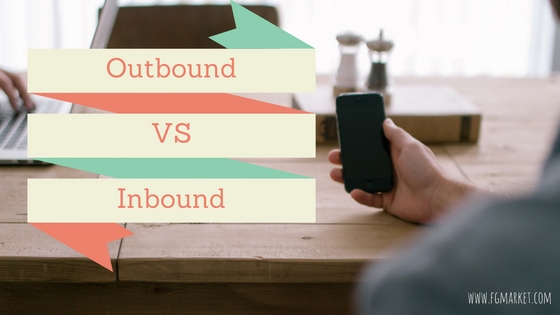You’ve probably heard the terms inbound and outbound marketing plenty of times during your career. Most of the time, these are terms that marketing and PR people like to throw around just to impress anyone that’s hearing (at least, that’s how I look at it).
Have you ever stopped to consider what these terms mean though, and what the difference is between the two? What about the effect it can have on your business?
Well, good news! I’m here to help dissect these words, and hopefully teach you the difference between the two, so you can decide which one works best for you and your business!
Outbound Marketing
First, let’s start with what’s consider the older form of marketing, outbound marketing.
Outbound marketing is defined as “any marketing that pushes products or services on customers.” This includes older forms of marketing, such as trade shows, seminars, email blasts, cold calling, telemarketing, and advertising. It’s marketing that eagerly pursues customers, and puts the marketing directly in their faces.
This type of marketing works for many businesses these days, but it’s certainly becoming more and more outdated feeling in the age of content marketing. That’s not to say that outbound marketing is the wrong way to market your business. Different strokes work for different folks, as the old saying goes, and you have to think about your audience when deciding whether to do outbound or inbound marketing.
Despite it’s outdated model, outbound marketing works well in areas where you are trying to market to older demographics, who might be less concerned with new technology and new ways of being sold to. A large majority of the world still prefers to hear ads on the radio, or watch commercials in-between their favorite shows.
Inbound Marketing
If you want to transform your marketing strategy into what we’ll call the “hip and cool” way to market to people, then you’re going to want to learn how to start doing inbound marketing.
Inbound marketing is what’s called “new marketing.” It is a marketing tactic that relies on earning people’s interest, rather than trying to push it on them through traditional forms of advertising.
Examples of inbound marketing include blog posts, search engines, social media, etc. It’s marketing to people by giving them useful info through mediums that they already use every day.
It’s a form of marketing that presents itself in a more down-to-earth, relatable way. It says to your customers, “we’re a business and we’re trying to earn a living, but we’re also concerned about your needs and want to provide you with the best info we can give you.”
Inbound marketing is more geared toward millennial customers, and those who are more familiar with the internet, technology, and are concerned with community building.
Inbound and outbound marketing both have strengths and weaknesses, and it’s up to you to decide which one works with your customers and your business model.


Leave a Reply